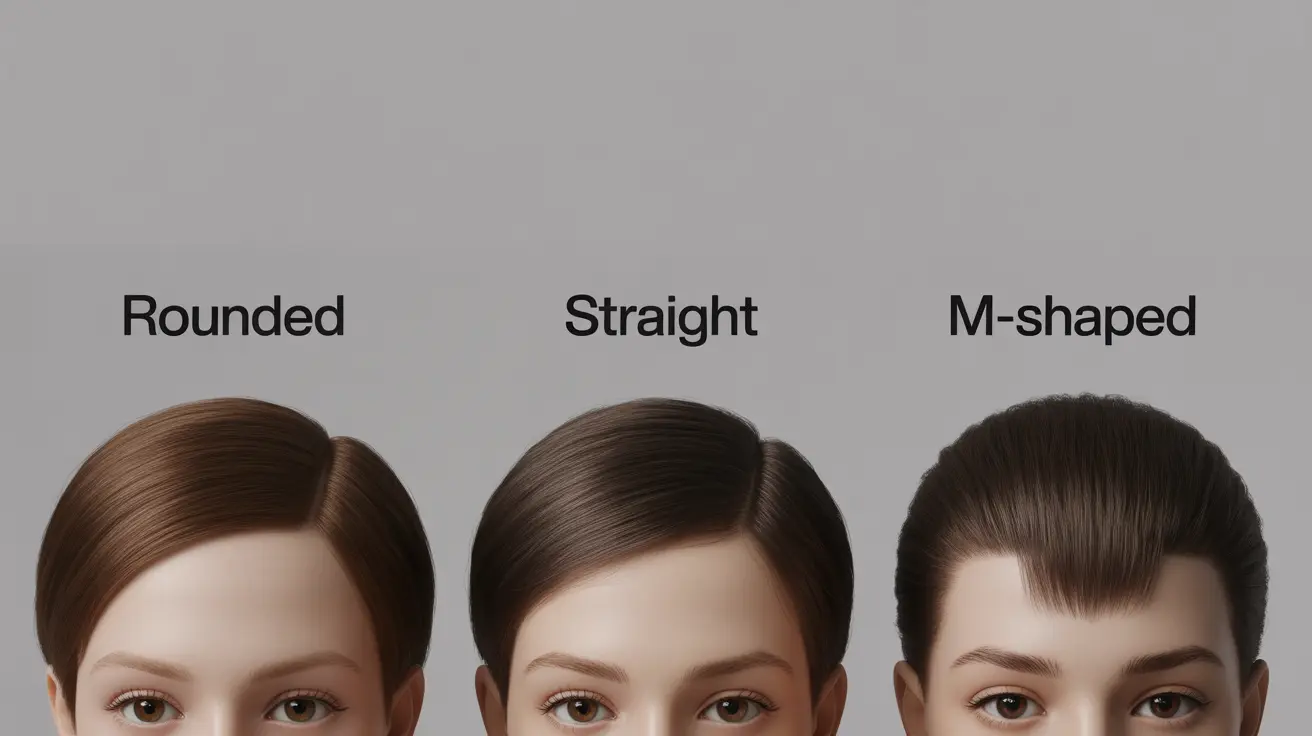Everyone's hairline is unique, and understanding what constitutes a normal hairline can help alleviate concerns about hair health and appearance. Whether you're noticing changes in your hairline or simply want to learn more about this important aspect of your appearance, having accurate information is essential.
This comprehensive guide will explore the various types of normal hairlines, factors that influence their appearance, and how to distinguish between natural variations and potential hair loss concerns.
Types of Normal Hairlines
Normal hairlines come in several distinct patterns, each perfectly natural and healthy. Understanding these variations can help you better identify your own hairline type:
Rounded Hairline
Characterized by a gentle curve that follows the natural contour of the forehead, this is one of the most common hairline patterns. It's particularly prevalent in women and is often considered aesthetically pleasing.
Straight Hairline
This type features a relatively straight line across the forehead with minimal recession at the temples. While less common than rounded hairlines, it's completely normal and can occur in both men and women.
M-Shaped Hairline
Also known as a widow's peak, this pattern creates a distinctive point in the center of the forehead. It's a genetic trait that can appear in people of any gender and is entirely normal.
Natural Hairline Changes
Your hairline naturally evolves throughout your life, influenced by various factors:
- Age
- Hormonal changes
- Genetics
- Gender
- Overall health status
Understanding these natural progressions can help you distinguish between normal changes and potential concerns.
Factors Affecting Hairline Position
Several elements contribute to your hairline's natural position and appearance:
Genetic Influences
Your genetic makeup largely determines your hairline pattern, including factors like:
- Natural hairline shape
- Predisposition to certain hairline changes
- Hair density and texture
Hormonal Factors
Hormones play a crucial role in hairline development and maintenance, particularly during:
- Puberty
- Pregnancy
- Menopause
- Normal aging processes
Maintaining a Healthy Hairline
While you can't change your natural hairline pattern, you can take steps to maintain its health:
Gentle Hair Care Practices
Protect your hairline by:
- Avoiding tight hairstyles that pull on the hairline
- Using gentle hair care products
- Minimizing heat styling near the hairline
- Being careful with chemical treatments
Lifestyle Considerations
Support overall hair health through:
- Balanced nutrition
- Adequate hydration
- Stress management
- Regular exercise
Frequently Asked Questions
What are the different types of normal hairlines and how can I identify mine?
Normal hairlines typically fall into three main categories: rounded, straight, or M-shaped (widow's peak). You can identify yours by examining your hairline in a well-lit mirror and noting its natural pattern and shape across your forehead.
How can I tell if my hairline is receding or just a normal variation?
A receding hairline typically shows progressive hair loss and thinning, while normal variations remain relatively stable over time. If you notice sudden changes, increased hair shedding, or significant recession at the temples, consult a healthcare provider for evaluation.
What factors influence the shape and position of a normal hairline?
The primary factors affecting hairline shape and position include genetics, hormones, age, and overall health status. Your natural hairline pattern is largely inherited, though it can be influenced by various biological and environmental factors throughout life.
Can styling or hair care habits affect the appearance of my hairline?
Yes, certain styling practices can impact your hairline's appearance. Tight hairstyles, excessive heat styling, and harsh chemical treatments can damage the hairline. Using gentle hair care practices helps maintain its natural appearance and health.
How does a normal hairline typically change with age in men and women?
In men, some recession at the temples and crown is common with age. Women typically maintain their hairline shape but may experience overall thinning. These changes are gradual and vary significantly among individuals based on genetic and hormonal factors.
Remember, while certain hairline changes are normal with age, sudden or dramatic changes should be evaluated by a healthcare professional to rule out underlying conditions.




